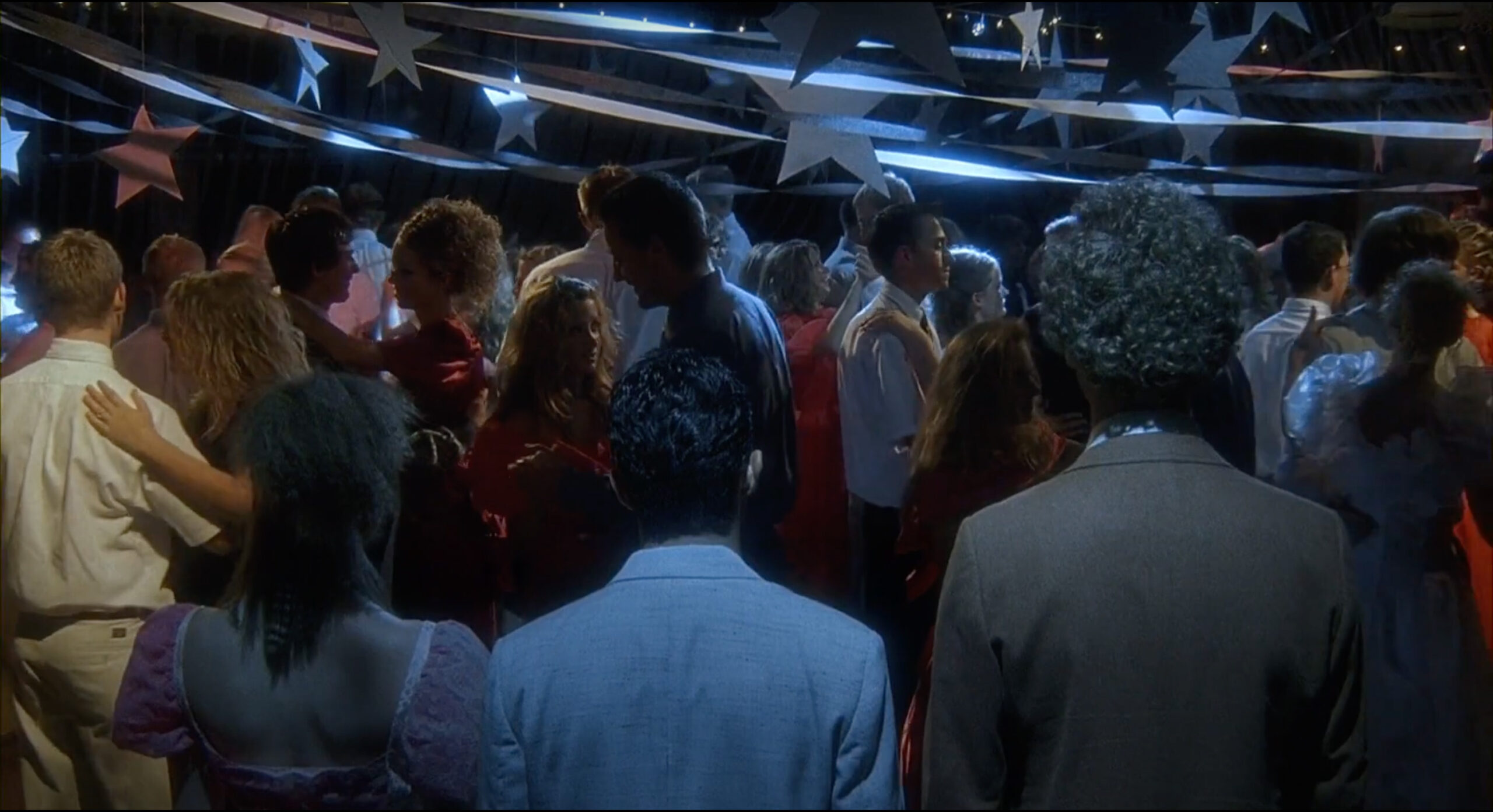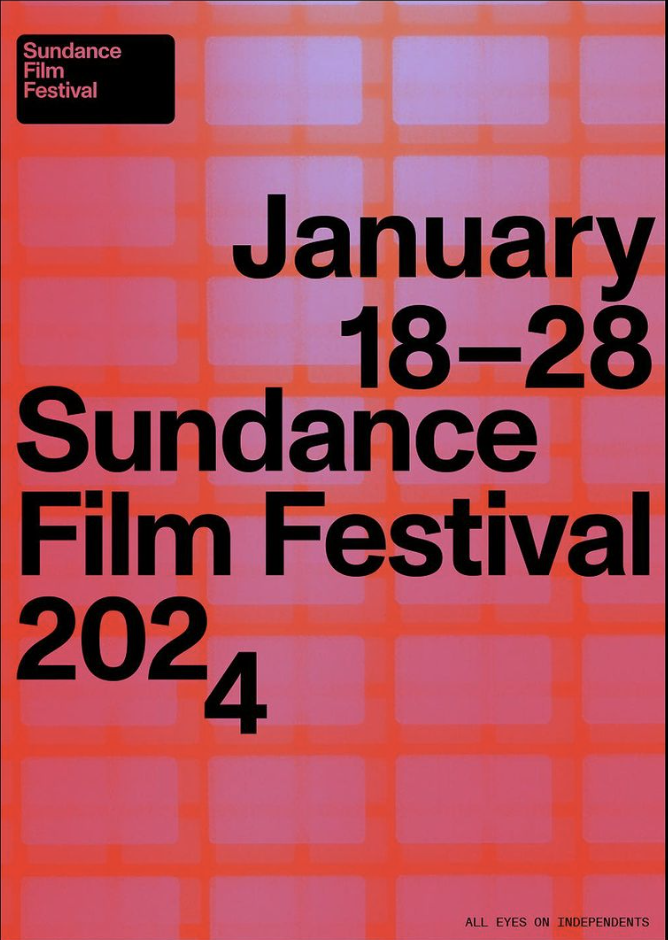
This year marked the Sundance Film Festival’s 40th anniversary. It also marked Fuller’s 20th anniversary of attending the festival. A small group of faculty, staff, and alumni first attended the festival in 2004. Those pioneers subsequently established the Windrider Film Forum to foster the kind of generous cultural engagement they encountered at Sundance.
As I walked through the falling snow in Park City this year, I considered what has made Sundance such a good home for Fuller for the past twenty years. There are over a thousand film festivals in the U.S. alone each year, but Sundance is the one we keep returning to. Why?
Sundance is an independent film festival, meaning the films showcased are not produced by any major film studio. The filmmakers raised the funds to make their films, hired their crew, mounted their production, and finished their film all on their own. Usually there are two or three key people – producers mostly – who were so passionate about the project that they pushed the film from conception to completion like Sisyphus somehow completing his impossible task. I think this go-get-‘em spirit resonates with the typical Fuller student – from its inception, Fuller has been driven by a “build the thing you want to see in the world” mindset.
For my Greek myth simile in the preceding paragraph to work better, Sisyphus should be a woman. I’m always struck by how many Sundance films are led by women. The major studios hire more men than women, so for many women, in order to make the films they want to make, they have to do it independently. This connects with Fuller too, I think, as Fuller has long been a place that encourages and supports women in congregational, organizational, and academic leadership.
Maybe it’s a by-product of looking for films and filmmakers outside the mainstream, but Sundance films tend to focus on the edges of society. In the fictional narrative categories, the films are about people we don’t often see in movies. The documentary films tend to feature and explicitly advocate for people who are underrepresented in our power structures, marginalized from society, and especially vulnerable to changes in our economic and environmental climates. Sundance is a festival for filmmakers on the margins making films about people on the margins. We might say Sundance features a cinema of “the least of these.” Another way of asking the question that began these reflections about why Fuller frequents Sundance would be to ask “Where would Jesus fest?” The answer might be Sundance.
The only thing that gives me pause about suggesting that Sundance is a festival that Jesus would attend is the fact that the festival takes place on the doorstep of one of the world’s premiere ski resorts. The cost of attending Sundance is prohibitive for most people—at Fuller we work hard to make it as affordable as possible for our annual contingent—and then I remember how often Jesus ate with wealthy people who were sympathetic to his vision yet unprepared for the way he would challenge them. Sundance films recreate that dynamic: in a place of high per-plate prices, Sundance filmmakers bring a sword that cuts even those audience members who believe they are already on the side of peace.
That’s the short answer to my question: Fuller keeps coming to Sundance because it feels like a place Jesus would be, a place where Jesus is. The films we see, and the filmmakers we meet, bear that out. If you want to join us at a future festival, sign-up here to stay informed.
Here are brief reflections on the films we saw this year.
This year marked the Sundance Film Festival’s 40th anniversary. It also marked Fuller’s 20th anniversary of attending the festival. A small group of faculty, staff, and alumni first attended the festival in 2004. Those pioneers subsequently established the Windrider Film Forum to foster the kind of generous cultural engagement they encountered at Sundance.
As I walked through the falling snow in Park City this year, I considered what has made Sundance such a good home for Fuller for the past twenty years. There are over a thousand film festivals in the U.S. alone each year, but Sundance is the one we keep returning to. Why?
Sundance is an independent film festival, meaning the films showcased are not produced by any major film studio. The filmmakers raised the funds to make their films, hired their crew, mounted their production, and finished their film all on their own. Usually there are two or three key people – producers mostly – who were so passionate about the project that they pushed the film from conception to completion like Sisyphus somehow completing his impossible task. I think this go-get-‘em spirit resonates with the typical Fuller student – from its inception, Fuller has been driven by a “build the thing you want to see in the world” mindset.
For my Greek myth simile in the preceding paragraph to work better, Sisyphus should be a woman. I’m always struck by how many Sundance films are led by women. The major studios hire more men than women, so for many women, in order to make the films they want to make, they have to do it independently. This connects with Fuller too, I think, as Fuller has long been a place that encourages and supports women in congregational, organizational, and academic leadership.
Maybe it’s a by-product of looking for films and filmmakers outside the mainstream, but Sundance films tend to focus on the edges of society. In the fictional narrative categories, the films are about people we don’t often see in movies. The documentary films tend to feature and explicitly advocate for people who are underrepresented in our power structures, marginalized from society, and especially vulnerable to changes in our economic and environmental climates. Sundance is a festival for filmmakers on the margins making films about people on the margins. We might say Sundance features a cinema of “the least of these.” Another way of asking the question that began these reflections about why Fuller frequents Sundance would be to ask “Where would Jesus fest?” The answer might be Sundance.
The only thing that gives me pause about suggesting that Sundance is a festival that Jesus would attend is the fact that the festival takes place on the doorstep of one of the world’s premiere ski resorts. The cost of attending Sundance is prohibitive for most people—at Fuller we work hard to make it as affordable as possible for our annual contingent—and then I remember how often Jesus ate with wealthy people who were sympathetic to his vision yet unprepared for the way he would challenge them. Sundance films recreate that dynamic: in a place of high per-plate prices, Sundance filmmakers bring a sword that cuts even those audience members who believe they are already on the side of peace.
That’s the short answer to my question: Fuller keeps coming to Sundance because it feels like a place Jesus would be, a place where Jesus is. The films we see, and the filmmakers we meet, bear that out. If you want to join us at a future festival, sign-up here to stay informed.
Here are brief reflections on the films we saw this year.

Union
The highlight of the festival was seeing a film produced by Fuller alumna Samantha Curley and executive produced by a few Fuller alumni and close friends. Union documents the efforts of a group of Amazon Fulfillment Center employees to unionize their New Jersey facility. There are verité (“fly-on-the-wall”) elements to the documentary’s production and finished form, but the power of the film resides in its more poetic elements, which make you feel the persistent, day-to-day struggle of trying to shift an organization as colossal as Amazon. The film isn’t about Amazon. It’s about the ins and outs of union organizing, which strikes me as capitalism at its finest: individuals forming a corporate identity to increase the value of their product – their labor. The moral arc of the universe is long. It requires long-suffering love which always hopes to walk that path. Both the filmmakers behind Union and the subjects of their film exemplify that love. Justice runs toward them from the end of that long road.
Daughters
This documentary chronicles a program that arranges daddy/daughter dances in prisons. The film shows one dance in a Washington DC prison, and, most importantly, all the work that leads up to it and continues after it to prepare and care for the incarcerated men and their families who participate in the dance. The subject is naturally heart-wrenching and tear-inducing, but the filmmaking is clear-eyed and honest, granting credibility to the filmmakers’ advocacy. “I was in prison, and you came to visit me.” Watching Daughters, I saw Jesus in an orange jumpsuit and his followers decorating tables for a dance.
Hit Man
Hit Man is a lark. This new Richard Linklater film based, like Bernie before, on an article by Skip Hollandsorth, fictionalizes the life of a college philosophy professor who moonlights with the FBI posing as a hit man for hire to capture would-be murderers. The film is a kind of sunshine noir. It’s more about performance than it is about assassination. In that ultra-relaxed Linklater way, it reaches for profundity without ever feeling pretentious. Mostly it’s just fun. It’ll be on Netflix. It’s a fine way to spend a few hours on a Saturday afternoon.
Thelma
Thelma casts ninety-four-year-old June Squibb as a nonagenarian on a mission to get back money stolen from her by a telephone scam artist. The film uses spy movie tropes to heighten the tension and the humor. Thelma is a lot of fun. It also manages to carefully balance that humor with heartfelt poignancy. It’s quite the stunt, but somehow they pull it off. My grandmother entered a care facility a couple of weeks before the festival, so the film was especially emotional for me. I imagine it will be for many others too for similar reasons.
Dìdi
Didi is the kind of movie I’ve come to expect from Sundance. It’s a barely-coming-of-age story about a thirteen-year-old Chinese-American boy in Fremont, CA, in 2004. The movie captures the moment in time excellently, and it feels authentic to the boy’s experience both in the way he is characterized and the way the film is put together. The filmmaker was a teenage boy in Fremont in the early 2000s, though the film isn’t an autobiography. Major studios don’t see a market for movies like Dìdi, so they don’t make them. I go to the movies to experience things I cannot otherwise experience… like what it was like to be a thirteen-year-old Chinese-American boy in Fremont, CA, in 2004. Our lives were different, but we have a lot in common too.
Between the Temples
Between the Temples is the best made film I saw at this year’s festival, and I never want to see it again. The film is an awkward, anxiety comedy about a middle-aged synagogue cantor, Ben Gottlieb (Jason Schwartzman)—You knew Jews sing the scriptures, right?—newly single again, severely depressed, and badly navigating his various relationships. He reencounters his elementary school music teacher, Carla (Carol Kane), and she gives him reason to live again.
Carla may be a kind of Manic Pixie Dream Septuagenarian, but Carol Kane is so remarkable in the role you can easily forgive the reiteration of the tired trope. Kane has been playing 70 since the 1980s, but somehow she seems like she’s 30 in this film. A lot of that has to do with the skill of the filmmaking, which is both obviously and sneakily smart as the story calls for it. I keep realizing clever ways the filmmakers put us in Ben’s head (between his temples, if you will). I have too strong a sympathetic response to watch high anxiety comedies like this, but I can also admit that this one is immaculately constructed. The religion-themed humor is a particular delight as is the religious symbolism that occurs throughout the film. I wish I had more of a nerve for this kind of film, but if you do, you’ll love it.
Napoleon Dynamite
As part of Sundance’s 40th anniversary celebration, the festival screened several stand-out films from the festival’s past. One of those was the tater tot-studded masterpiece Napoleon Dynamite. Almost all members of the cast as well as key members of the crew were in attendance. The audience was enthusiastic. Celebratory screenings like this are one of the joys of attending a film festival.
I’ve seen Napoleon Dynamite countless times. Seeing it in the context of the festival made me keenly aware of the ways it is very much a story about people on the outside of “respectable” American society looking in. The image that sticks with me is the one at the top of this article – the films odd trio stands on the edge of a high school dance, and the image is composed to resemble an American flag with the decorations standing in for the stars and stripes and the girls’ red dresses providing the crimson field. Don’t we all feel that way? That’s the film’s real grace. None of us were as weird as Napoleon, but we all felt like we were, and we’re all striving to find our place in the red, white, and blue. The magic of the movie is that those oddballs get to be the heroes and find a place in the end.
Agent of Happiness
Agent of Happiness is a documentary from Bhutan about a government worker who travels door-to-door filling out a questionnaire about how happy individuals are. Happiness is a key quotient of success for Bhutanese society. This is how they measure how they are doing. The underlying questions guiding the film are worthwhile, and the film is at its best when it leans into its ethnographic elements. There is nothing tidy about the concept of happiness, and what people think will make them happy is even less orderly. The documentary wants a tidy conclusion and strains to reach for one. While watching the film I thought a lot about how the United States has enshrined the pursuit of happiness as a goal, not the achievement of it. It is at least interesting to see a society that dares to intend the reverse.
The American Society of Magical Negroes
The Adjustment Bureau and the TV Tropes website had a child, and it’s name is The American Society of Magical Negroes. In this high-concept fantasy rom-com, flailing visual artist Aren (Justice Smith) gets recruited into a order of “Magical Negroes” who have, in the interest of saving Black lives, been helping white men remain comfortable for at least as long as these states have been united. The movie wears its social and literary commentary on its sleeve, and, to its credit, manages to do so without becoming pedantic. It does this by keeping the story and the speeches personal.. or maybe that’s just the way the movie helped this white guy remain comfortable while getting a good lesson.
The rom-com aspects of the story are the film’s most winning parts. Justice Smith and newcomer An-Li Bogan have great chemistry. I would love to see them in the kinds of rom-coms they made in the mid-90s. There might also be a thematic and narrative reason why they have such good chemistry, but I’ll let you find that out for yourself. The film is releasing on March 15. It was premiering at Sundance.

Elijah Davidson is Co-Director of Brehm Film and Senior Film Critic. Subscribe to Come & See, his weekly newsletter that guides you through the greatest films ever made, and find more of his work at elijahdavidson.com.